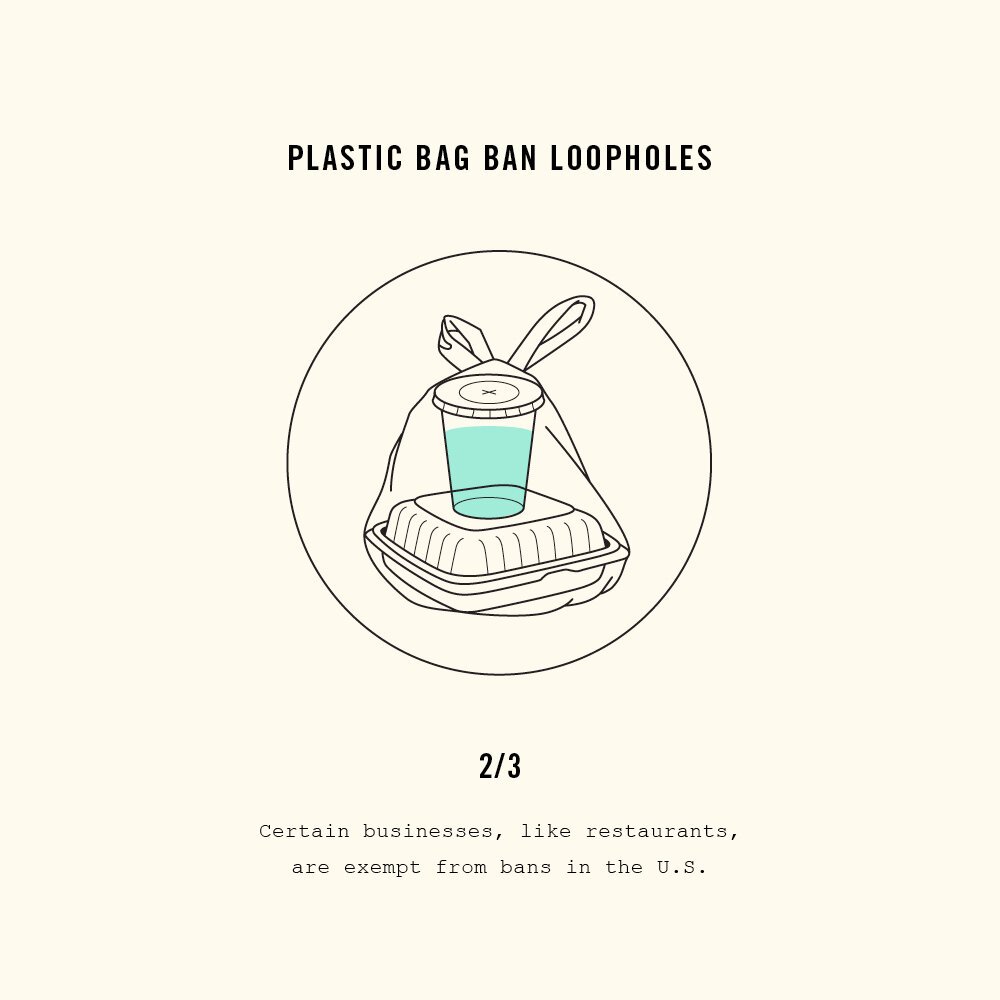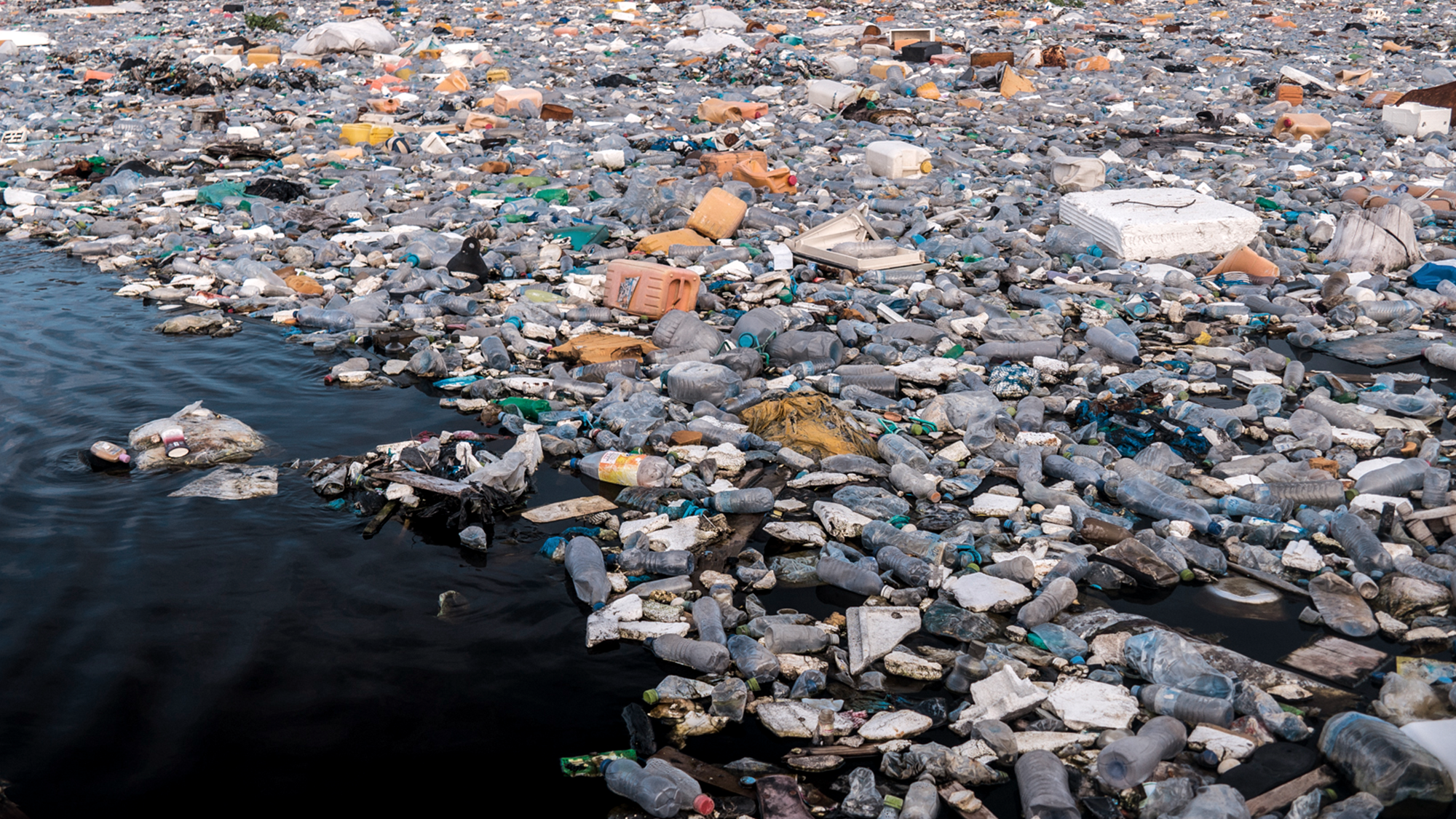PARLEY AIR: Do Plastic Bans Work?
A closer look at global efforts to stop plastic at the source
In 2019, the European Union officially banned the 10 most common single-use plastic items found littering Europe's beaches. Single-use plastic cutlery, plates, straws, plastic cotton buds and balloon sticks and expanded polystyrene (Styrofoam) cups are all on the list. They also banned oxo-degradable plastics that break down into bits of microplastic – with the end goal being to create a circular model in which all plastics sold in the 27 countries that make up the EU are recyclable by 2030.
Single-use plastics including bags, straws, food packaging and takeout containers account for about 40% of all plastic made every year. Plastic bag bans have been around since Bangladesh implemented the first law in 2002. A few countries have gone a step beyond, like Zimbabwe, when the country banned Styrofoam food containers in 2017 – but the EU’s move was the first to ban so many plastic products at once. Will it work? This month, we’re exploring what plastic bans can and can’t do – and the role policy can play in curbing plastic consumption.
Take the Parley AIR Pledge and receive our monthly AIR newsletter
Most ocean litter is plastic bags, bottles and takeout containers
Let’s start with the problem. It can be easy to blame gigantic industries for the plastic pollution crisis, and they definitely play a huge role. But so do everyday items.
A team of researchers recently collected 12 million pieces of trash from waterways around the world. While fishing gear was the largest source of waste in the open ocean, common single-use items like bottles, cans and bags made up the vast majority of pollution elsewhere in the ocean, as well as in rivers. The four most common pieces of litter were single-use bags, plastic bottles, food containers and food wrappers. These items made up almost half of the human-made waste – and on average, 80% of that waste was plastic.
Plastic bags, takeout containers, straws, bottles and to-go cup lids made up the majority of litter on shorelines, while plastic bags and bottles alone made up more than 40% of pollution on the deep seafloor.
The team also looked at garbage in rivers (a huge source of marine plastic pollution, more on that here). Food containers and plastic bags accounted for almost 60% of trash in river waters. Plastic to-go cup lids were the most common trash on riverbeds.
In total, most of the waste they collected from oceans and ocean-bound rivers was from take-away food and drinks. This included plastic bottles, straws and utensils. Plastic bags were in the top two most common pieces of trash found in five of the seven environments. Using legislation to take these sources of disposable plastic out of circulation could drastically reduce the amount of new plastic pollution flowing into oceans.
Changing the mindset
Most bans are still relatively new but it's already clear that limiting the availability of single-use plastics is an effective way to reduce plastic consumption.
80% of Kenya’s population stopped using single-use plastic bags two years after a country-wide ban went into effect, and legislation that incentivizes people to ditch plastic bags can be equally as effective as outright bans.
In 2002, Ireland was one of the first countries to implement a plastic bag tax. Within weeks, plastic bag use dropped by 94%. In Chicago, people were about 30% less likely to use a disposable bag following a new 7 cent fee. At the same time, the number of people using reusable bags more than doubled. The same trend was observed in Alabama.
The United Nations noted in 2019 that plastic bag bans were especially important in countries where garbage is mostly incinerated. Burning plastic releases toxic gasses including mercury and polychlorinated biphenyls (BCPs) that are poisonous to animals and plants and cause cancer and reproductive issues in humans.
Progress, not perfection
Banning or taxing single use plastics is a starting point, not an end game — but laws do reduce demand for new plastic products.
One study showed that California’s 2014 plastic bag ban was followed by a spike in garbage bag purchases. The spike erased some of the ban’s success, but only about 30%, meaning the law still led to a 70% reduction in plastic bag use in the state. It also completely removed thin, hard-to-recycle single-use plastic bags from stores statewide.
Another place where there’s room for improvement is closing loopholes. Most countries only have partial bans that exclude certain thicknesses of plastic from bag bans or only enforce the laws for certain businesses. In California, for example, plastic bag bans don’t apply to restaurants and small businesses, so they can still hand out thin single-use plastic bags to every customer. In Kenya, some small vendors switched to small, clear plastic bags after the traditional two-handled carrier bags were outlawed in 2017, meaning they’re still distributing plastic bags.
Even in supermarkets and large stores worldwide, plastic bags are still at the end of the check-out line despite bans. That’s because some laws allow retailers to switch to thicker plastic bags that legally qualify as “reusable” – but still function much like single-use bags. In many cases, these thicker bags are made at least in part from recycled plastic, rather than the new plastic that the thinner bags require, which is a step forward.
There’s also the fact that plastic bans only solve part of a huge problem. Many countries with bans still manufacture plastics or have poor waste management systems that allow unbanned plastic goods to get into waterways and make their way to oceans. There’s also a lack of widespread legislation that restricts single-use plastics that aren’t bags.
These imperfections don’t mean that plastic bans aren’t effective at reducing plastic pollution — they are. It means that this is the baseline we need to work off of to continue to improve legislation that blocks single-use plastics from being used in the first place.
Beyond bags
On average, a plastic bag is used for about 12 minutes before becoming plastic waste. Targeting bags was a great start, but other common plastic items need to be next. Luckily, the EU isn’t the only place making moves to expand plastic bans this year.
On June 1, the Maldives banned all future imports of many single-use plastic items including all plastic straws, single-use plates, cutlery and stirrers and Styrofoam food boxes. It was a huge win that helps position the Maldives as a Parley Future Island Nation.
We all have a role to play in reducing demand for single-use plastics. Here are some places to start.
Change starts with personal choices. Check out our realistic guide to ditching unnecessary plastic.
Learn about plastic bans in your community and vote if there’s one on the ballet.
If there isn’t a plastic ban in your town, state, country, create one. Dyson Chee helped pass one of the strictest plastic bans in the U.S. when he was just 17.
Help people understand how plastic pollution is a solvable problem. Download our social kits here and spread the word.
TAKE ACTION
There’s strength in numbers but it starts with one. Read up, make noise, spread the word and give others the tools to do the same. This is the best way to drive world leaders to adopt policies that will slow climate change and help the oceans stay healthy so they can play their role.
IG @parley.tv | FB @parleyforoceans
#ParleyAIR








































